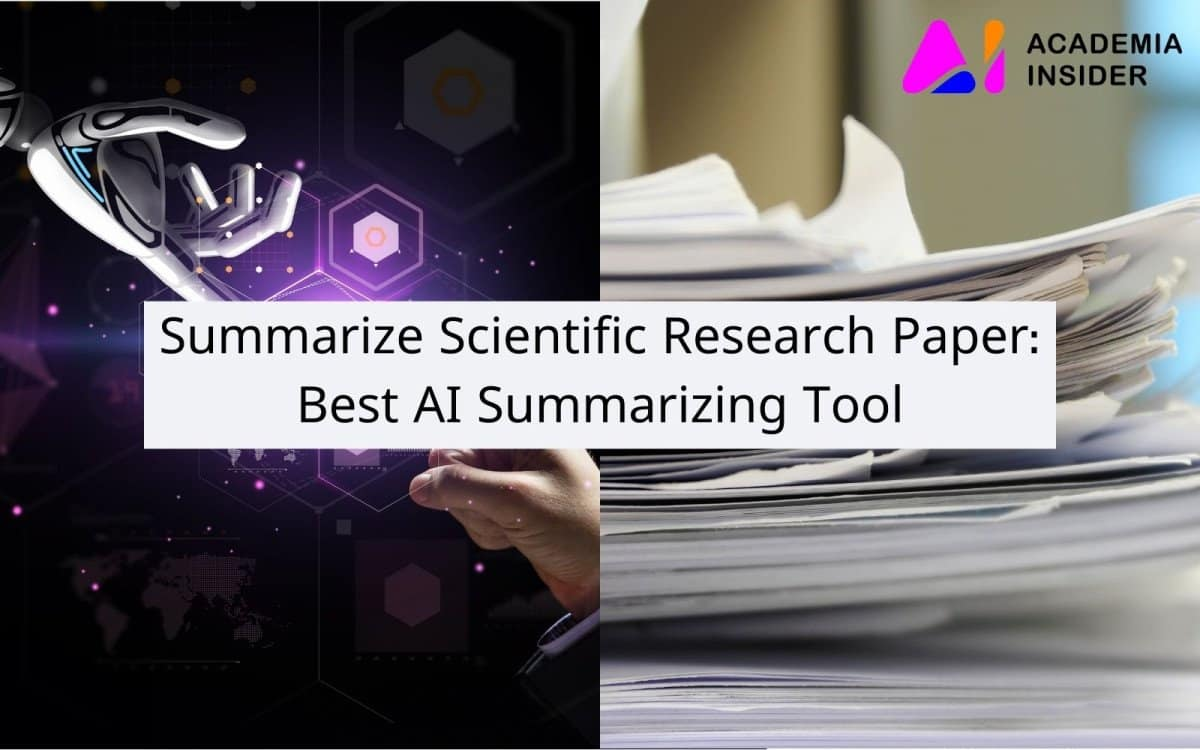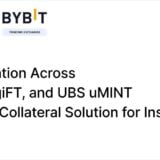The best websites for AI-powered research summarization that reduce complicated academic papers to concise, understandable summaries will be covered in this article.
Professionals, researchers, and students who wish to improve comprehension and save time will find these tools ideal.
These platforms change how we consume and comprehend scientific content by offering intelligent literature reviews and real-time explanations.
Key Points & Best Websites For AI-Powered Research Summarization List
| Website | Key Features |
|---|---|
| SciSpace (formerly Typeset) | Summarizes scientific papers; explains complex terms; Chrome extension available. |
| Explainpaper | Allows users to highlight text in research papers for simplified explanations. |
| Scholarcy | Generates summary flashcards; extracts key facts, figures, and references. |
| Elicit | AI research assistant; finds relevant papers and summarizes them by question. |
| Paperpile | AI-powered summary and reference management; integrates with Google Docs. |
| QuillBot Research | Paraphrasing tool with summarizer and research features for academic texts. |
| Consensus | Searches academic research and gives evidence-based summaries per query. |
| Research Rabbit | Visualizes citation networks; includes AI summarization and discovery tools. |
| Semantic Scholar | Uses AI to surface key points, citations, and paper summaries. |
9 Best Websites For AI-Powered Research Summarization
1.SciSpace (formerly Typeset)
SciSpace is a cutting-edge platform made to make scientific research easier for professionals, scholars, and students. The AI Copilot, its most notable tool, aids users in comprehending and summarizing intricate academic papers. Key concepts, tables, and formulas are explained in plain language for users who upload PDFs.
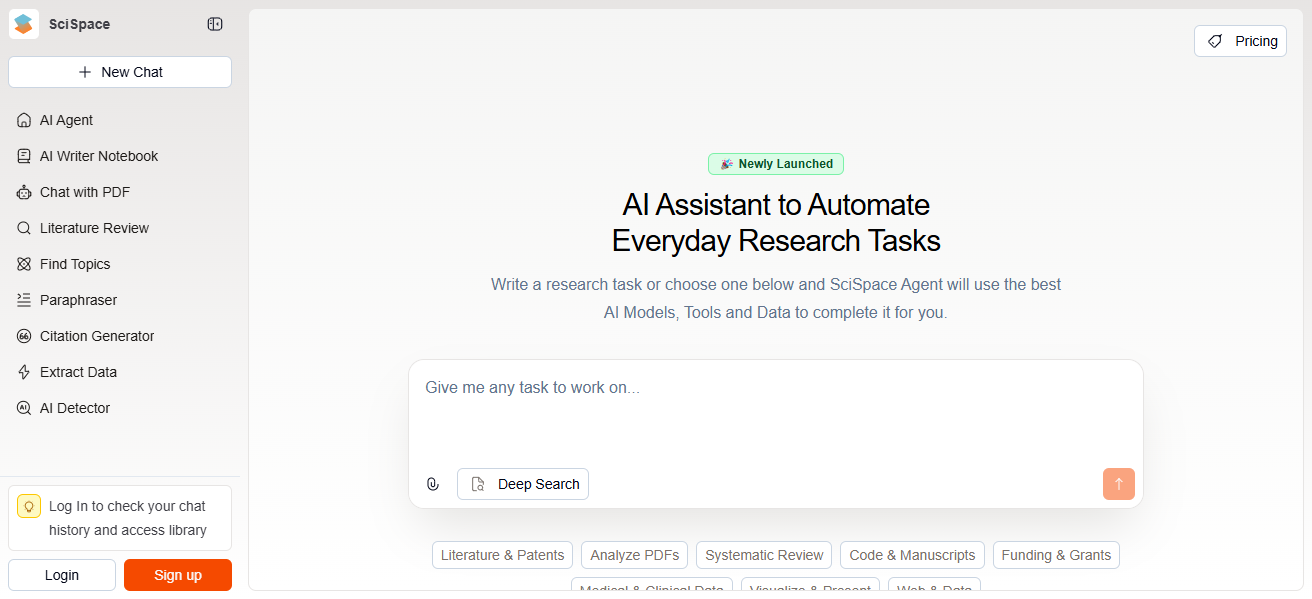
Additionally, SciSpace offers team collaboration tools and citation generation. Real-time interaction with research papers on publisher websites such as arXiv or Springer is made possible by its Chrome extension.
SciSpace saves time and improves comprehension without requiring in-depth domain knowledge, making it perfect for non-experts attempting to understand technical content.
| Feature | Description |
|---|---|
| AI Copilot | Explains concepts, tables, and formulas in simple terms. |
| PDF Upload Support | Users can upload research papers for analysis. |
| Chrome Extension | Interact with research papers directly on journal websites. |
| Jargon Simplification | Translates complex academic language into plain English. |
| Contextual Summarization | Provides section-by-section summaries. |
| Real-time Q&A | Ask questions and get contextual answers from the paper. |
2.Explainpaper
A free AI-powered tool called Explainpaper was created especially to increase research paper accessibility. After uploading a PDF, users can use natural language processing to highlight challenging sections for instantaneous, condensed explanations.
It eliminates jargon barriers and encourages a deeper comprehension of technical content because it was created with students and non-native English speakers in mind. Explainpaper concentrates on context-specific clarification, in contrast to general summarizers.
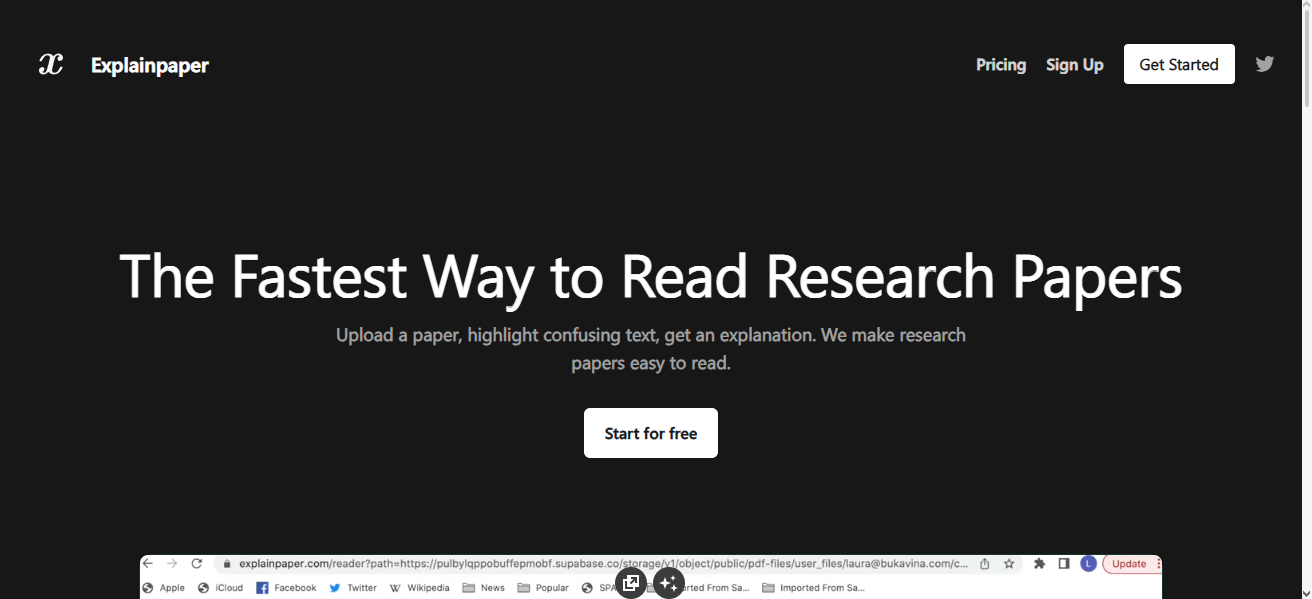
It explains rather than merely summarizes. It’s particularly helpful in disciplines where complicated terminology can make comprehension difficult, like computer science, biology, or physics. Explainpaper simplifies otherwise complex academic writing in an easy-to-understand and efficient manner.
| Feature | Description |
|---|---|
| Highlight-to-Explain | Users highlight confusing text for instant explanations. |
| Free and User-Friendly | No subscription required; clean, minimal UI. |
| Contextual Understanding | Offers targeted clarification instead of general summaries. |
| Academic-Focused | Designed especially for scientific and technical papers. |
| No Registration Required | Can be used without creating an account. |
3.Scholarcy
Scholarcy is an AI-powered tool for summarizing lengthy scholarly articles into readable, user-friendly summaries. It divides documents into “summary flashcards” that highlight important findings, methods, contributions, and cited works.
Scholarcy automatically creates a bibliography and highlights significant figures, tables, and references. For researchers who need to swiftly scan a lot of material, it’s perfect. Word, PDF, and HTML are among the formats that Scholarcy supports.
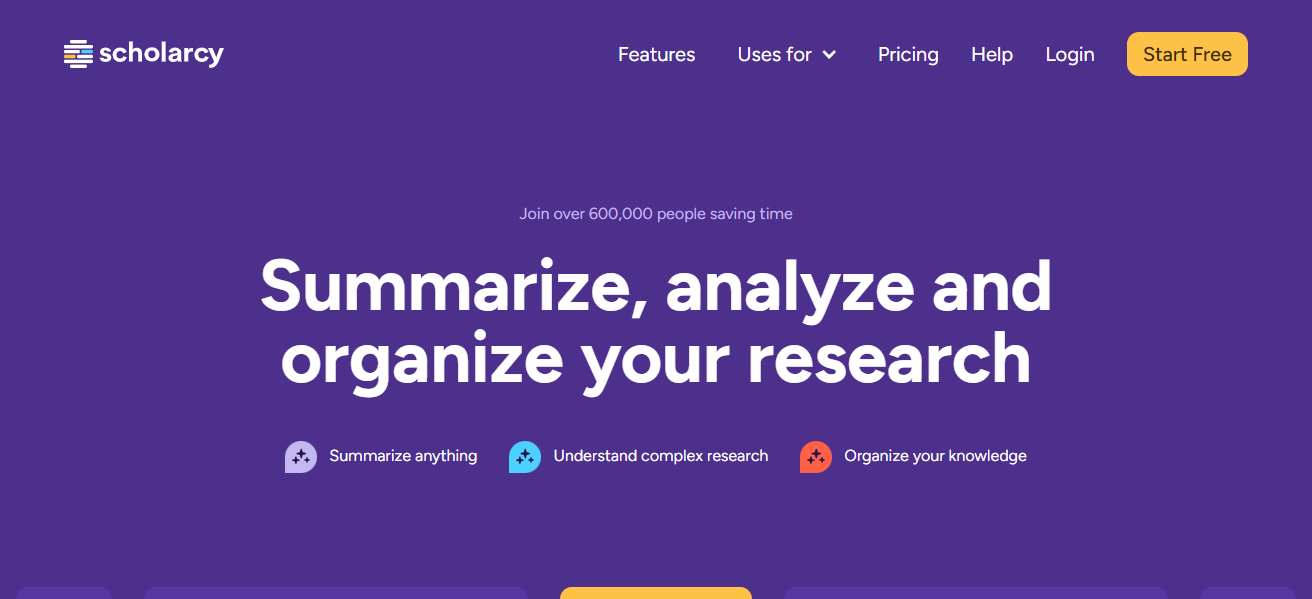
One-click summarization from journal websites is made possible by its browser extension. Scholarcy is helpful for professionals, educators, and students because it expedites the literature review process and cuts down on the amount of time spent reading long research papers.
| Feature | Description |
|---|---|
| Summary Flashcards | Breaks down papers into key insights and summaries. |
| Bibliography Generator | Extracts and formats references automatically. |
| Highlights Key Figures & Tables | Identifies and explains visuals from the research. |
| Browser Extension | Summarizes papers directly from journal websites. |
| Supports Various Formats | Accepts PDF, Word, and HTML documents. |
| Research Highlight Extraction | Pulls out core findings and contributions from papers. |
4.Elicit
Ought created the AI research assistant Elicit, which assists users in locating, summarizing, and contrasting scholarly articles. Elicit, which uses large language models to support literature reviews, uses scientific sources to provide answers to user-defined research questions.
It offers pertinent paper summaries arranged by question relevance, methodology, and results rather than merely searching keywords. Elicit is perfect for academic writing, policy analysis, and hypothesis development.
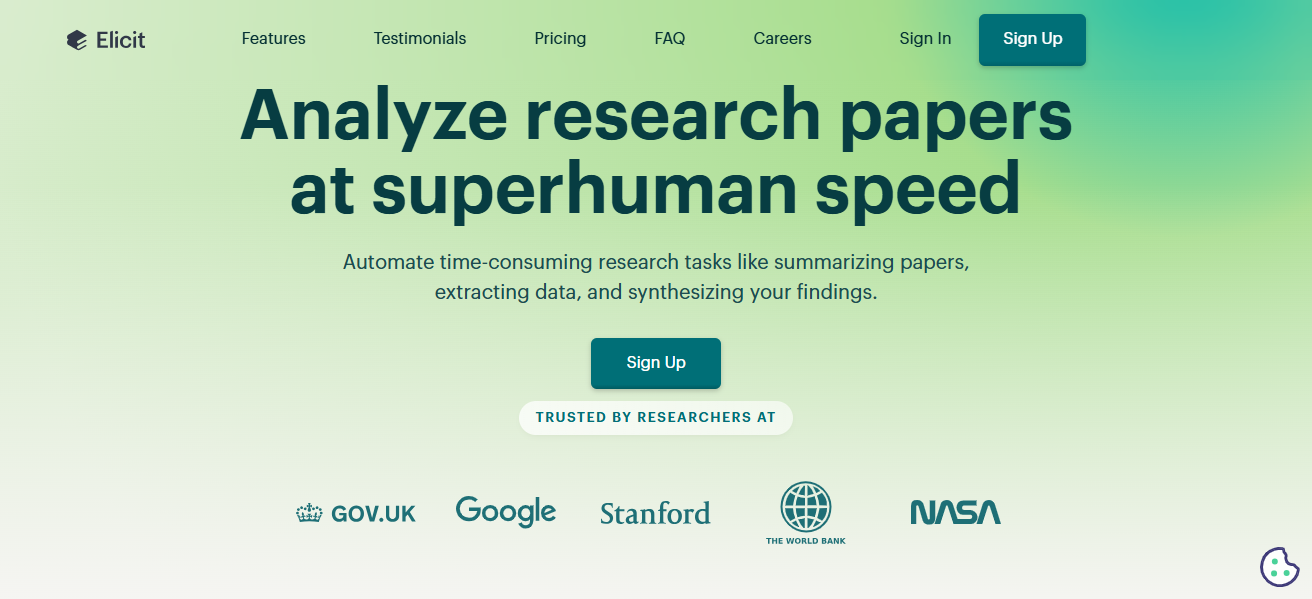
Additionally, it facilitates the extraction of papers from the Semantic Scholar database. The tool speeds up and improves the effectiveness of evidence-based research while assisting users in avoiding confirmation bias. Elicit is free and especially helpful for users in academic and institutional settings.
| Feature | Description |
|---|---|
| Research Question Summarization | Answers user queries using academic sources. |
| Paper Comparison | Compares methodologies, findings, and limitations side by side. |
| Smart Literature Review | Helps identify relevant papers and trends. |
| Semantic Scholar Integration | Pulls papers from trusted academic databases. |
| Avoids Keyword Search Bias | Uses NLP to find meaning-based matches, not just keywords. |
5.Paperpile
Paperpile is a research and reference manager that has built-in artificial intelligence tools for organizing and summarizing academic material. Its strength, despite not being a pure summarization tool, is its smooth integration with citation management, Google Docs, and PDF annotation.
It has recently added AI-assisted tools that assist users in highlighting pertinent passages, creating concise summaries, and extracting important insights from papers. Researchers can easily export formatted bibliographies, collaborate with others, and arrange sources.
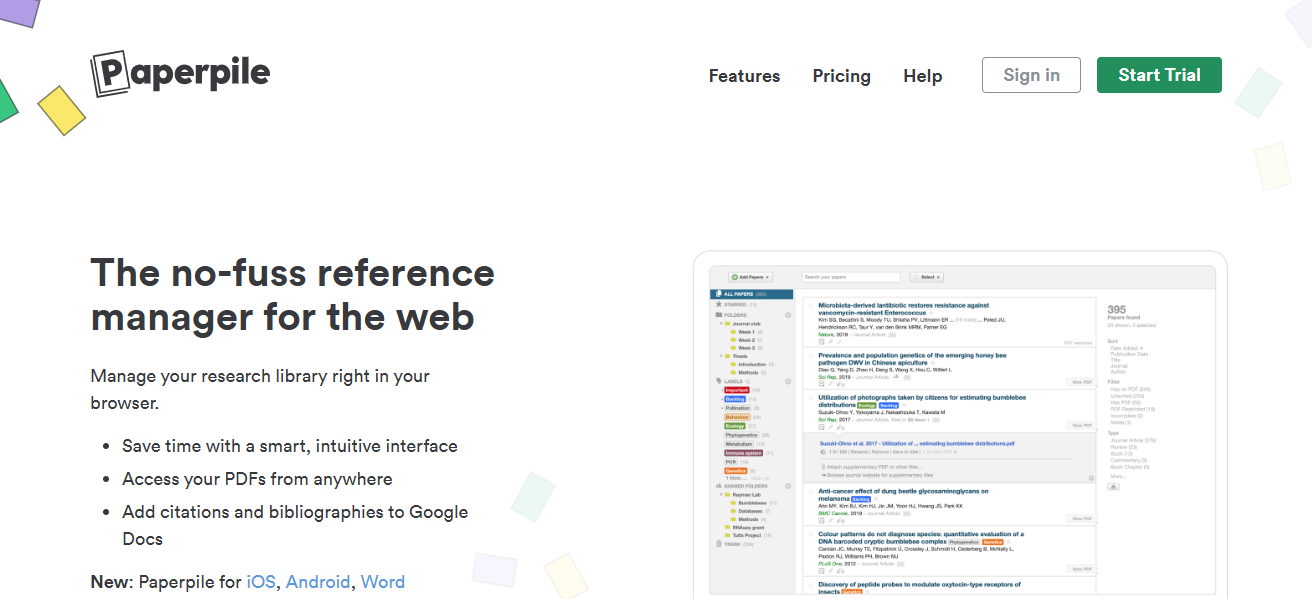
Paperpile, which combines productivity with AI to streamline the entire research workflow, from collection to citation, is best suited for academics handling large volumes of research.
| Feature | Description |
|---|---|
| Reference Management | Organizes and formats citations automatically. |
| Google Docs Integration | Seamlessly cites and collaborates within Google Docs. |
| AI-Assisted Summarization | Highlights and summarizes content from PDFs. |
| PDF Annotation | Allows notes, highlights, and markup directly on PDFs. |
| Cloud Sync | Backs up and syncs libraries across devices. |
6.QuillBot Research
QuillBot’s Research tool enhances its standing as a leading platform for summarizing and paraphrasing. It provides an academic-focused summarizer that creates succinct summaries of research papers, articles, or web content.
Depending on the amount of detail required, users can select between key sentence and paragraph modes. The AI breaks down technical jargon and recognizes key themes. QuillBot saves hours of reading time and improves comprehension
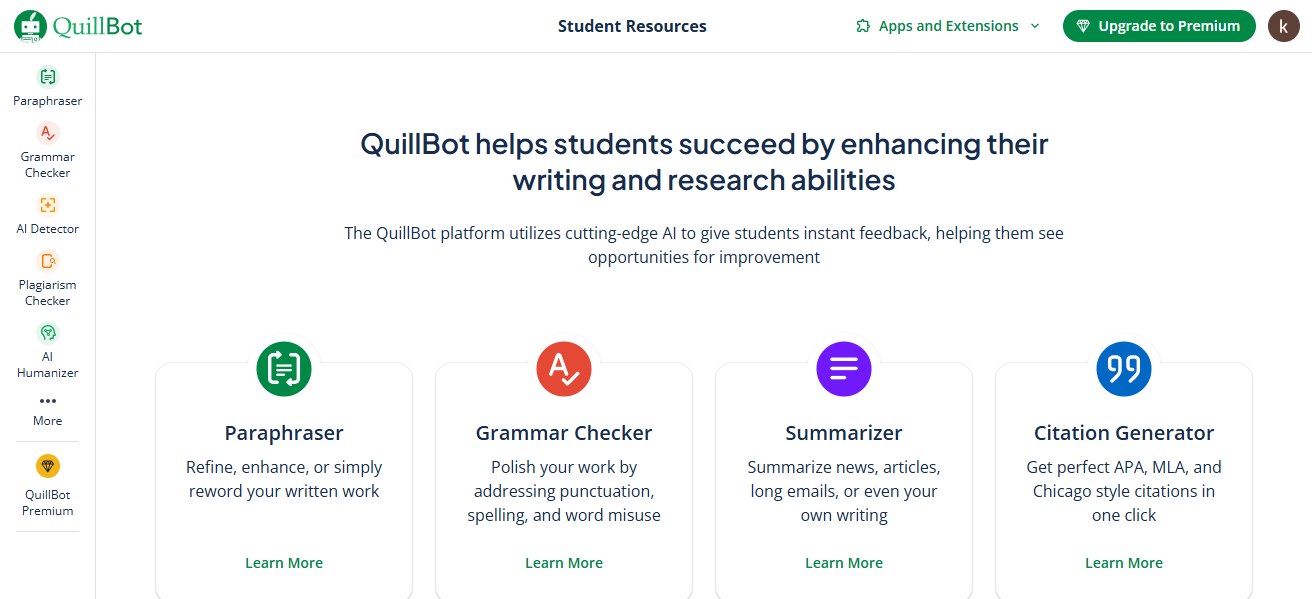
Which is especially beneficial for students and ESL users. It’s excellent for preparing papers because it has built-in citation tools and writing improvements. Its summarizing feature is still useful and easy to use, despite being more general than others.
| Feature | Description |
|---|---|
| Academic Summarizer | Condenses research articles into brief overviews. |
| Two Summary Modes | Choose between Key Sentences and Paragraph modes. |
| Paraphrasing Integration | Rewrites complex academic text for clarity. |
| Writing Tools Integration | Pairs with grammar checker and citation generator. |
| User-Friendly UI | Clean dashboard ideal for students and beginners. |
7.Consensus
Consensus is an AI-powered search engine that uses natural language queries to compile peer-reviewed scientific research. It provides concise, fact-based responses straight from scholarly literature rather than providing links like Google Scholar does.
For instance, the question “Does vitamin D reduce depression?” yields a summary of research results from several studies. It is designed to counteract disinformation by highlighting expert consensus.
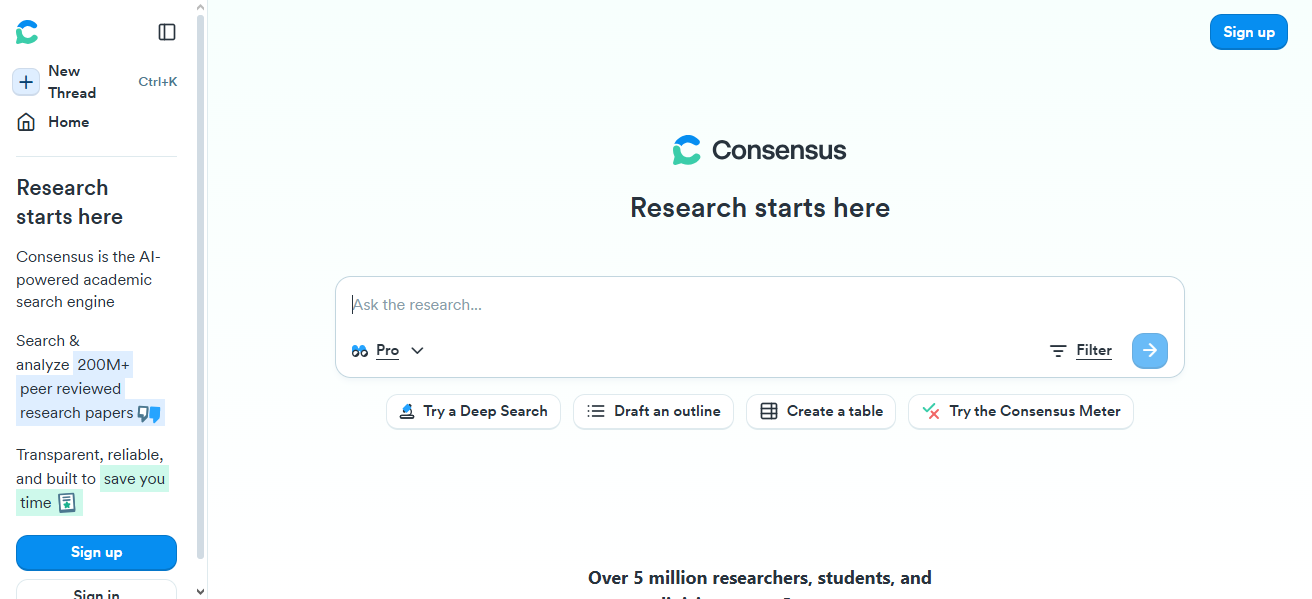
Consensus assists users in drawing conclusions based on factual information rather than subjective judgments, which is beneficial for professionals, journalists, and students alike. It saves hours of research time and is particularly useful for evidence-based decision-making in the domains of health, education, and policy.
| Feature | Description |
|---|---|
| Evidence-Based Answers | Provides direct conclusions from peer-reviewed studies. |
| Natural Language Search | Accepts questions in plain English (e.g., “Does coffee improve focus?”). |
| Aggregated Research Findings | Summarizes agreement or disagreement across studies. |
| Source Transparency | Lists the studies used in each summary. |
| Focus on Health, Science, Policy | Covers domains with strong academic backing. |
8.Research Rabbit
Using network-style visualizations, Research Rabbit is a visually-driven research discovery and management tool that facilitates user exploration of scholarly articles. It provides AI-based summarization and clustering capabilities in addition to its primary strengths in paper discovery and citation mapping.
In addition to exploring co-authorship and citation relationships across disciplines, users can group papers into collections. Compared to traditional databases, its user-friendly interface makes it simpler to track the development of research topics.
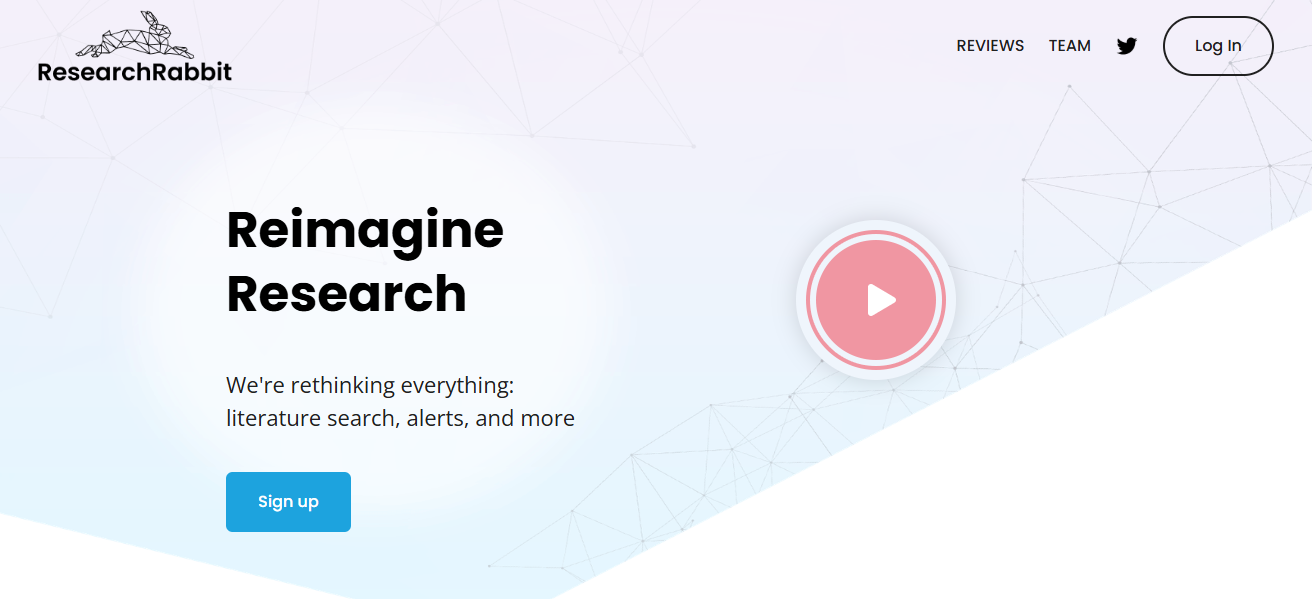
Its AI components expedite research curation and comprehension, but it is not just a summarizer. Research Rabbit converts research from linear reading to dynamic exploration, which is particularly helpful for academic teams.
| Feature | Description |
|---|---|
| Visual Citation Network | Explore research through co-authorship and citation maps. |
| Collection Management | Group and organize papers for projects. |
| AI-Powered Recommendations | Suggests related work based on user input. |
| Collaboration Tools | Share collections with research teams. |
| Summarization + Discovery | Offers brief insights along with paper discovery features. |
9.Semantic Scholar
The Allen Institute for AI developed Semantic Scholar, an academic search engine that uses machine learning to improve paper summarization and discovery. It highlights important citations, catchphrases, and techniques and produces organized, succinct abstracts.
More than 200 million scholarly articles are analyzed by its AI models, which offer sophisticated filters for disciplines like biology, medicine, and computer science. Additionally, Semantic Scholar provides citation context
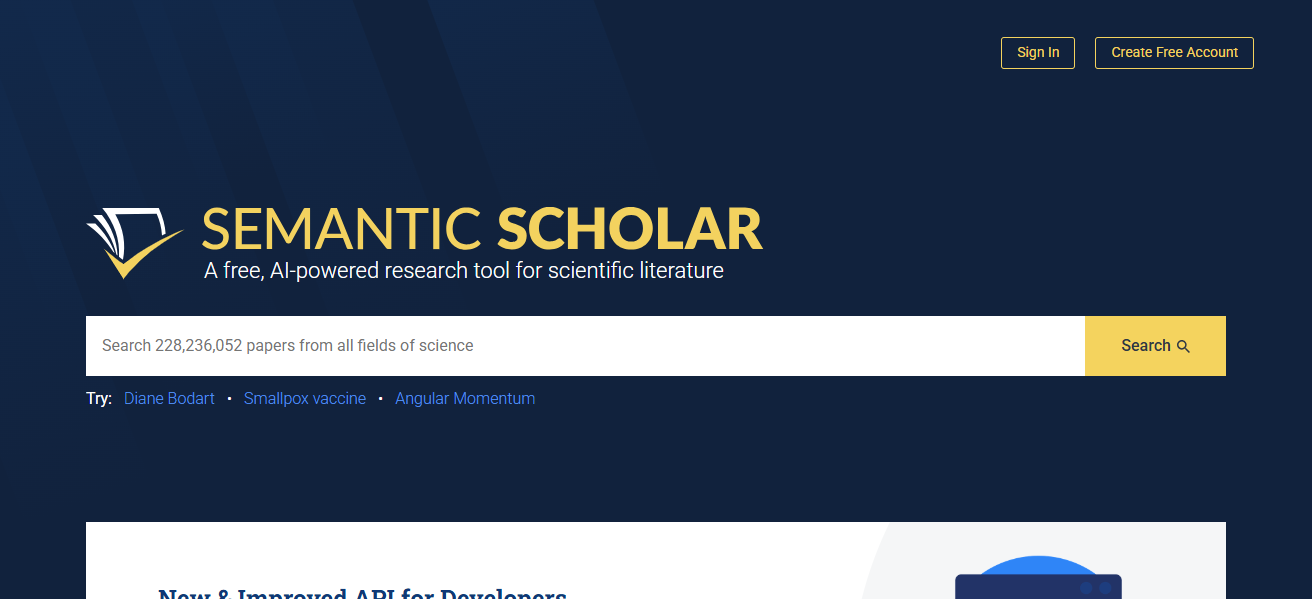
Which aids users in rapidly evaluating the significance of a paper. Quick overviews are provided by the TL;DR summaries of a few chosen papers. It is a vital tool for scholars, researchers, and students everywhere, whether they are using it for literature reviews or for quick insights.
| Feature | Description |
|---|---|
| AI-Powered Search Engine | Uses NLP to improve relevance of search results. |
| TL;DR Summaries | Provides short, one-line summaries of papers. |
| Influential Citation Detection | Highlights most-cited and impactful references. |
| Filter by Field and Methodology | Enables fine-grained search customization. |
| Open Access Support | Flags and prioritizes freely available content. |
Conclsuion
AI-powered research summarization tools such as Scholarcy, Elicit, and SciSpace streamline difficult academic texts, increasing comprehension and saving time.
These platforms provide customized features, such as real-time explanations and visual citation maps, for researchers, professionals, and students.
Research efficiency is increased by selecting the appropriate tool, which also increases accessibility to knowledge and speeds up discovery in both academic and professional domains.

